2024 Shrimp Summit Key Takeaways: Breeding and Disease Management
* Key takeaways:
• After shifting from wild-caught P. monodon to SPF L. vannamei a decade ago, India’s shrimp production increased tenfold to about 800,000 mt. It is poised to triple its growth based on current installed capacity of hatcheries, feed mills, and processing plants.
• However, diseases are a major stumbling block. Annual disease losses in India cost an estimated at $1 billion and are attributed mainly to white spot disease (WSD), hepatopancreatic microsporidiosis (EHP) and white feces syndrome (WFS).
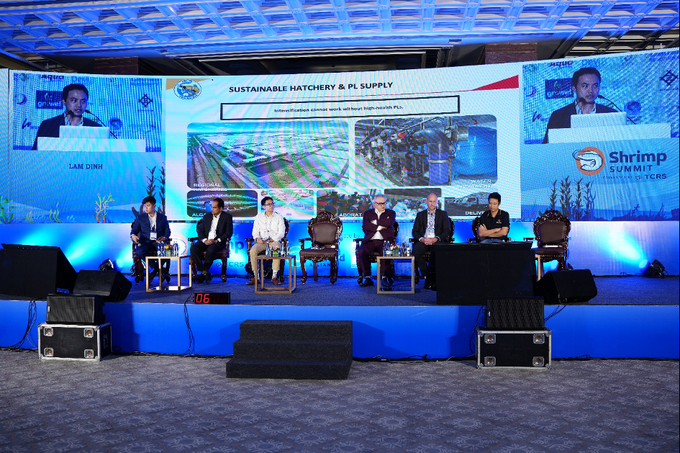
• Ecuador raises the same species as India at nearly the same density, yet they have steady growth and far less disease and antibiotic issues. A lesson to be learned from Ecuador’s success is that selecting strains for performance in the local environment optimizes performance for current pathogens, environment, and management.
• Breeding programs are an essential element of a mature agribusiness, because they improve performance, competitiveness, and economic gains -- and these benefits compound over time.
Some speakers and summaries of their presentations at the conference include:
Ramraj Dhamodaraswamy | Padmanabha Labs/HiBreeds Aquatics
It has been three decades since the first white spot epidemic in India, but it remains a significant pathogen. It is primarily transmitted horizontally among small farms on shared brackish-water creeks and is less prevalent among inland farms using ground water.
Diseases and their Management in India’s Shrimp Farming
Ramraj Dhamodaraswamy - Padmanabha Labs/HiBreeds Aquatics
EHP causes slow growth. It is managed by stocking clean postlarvae and pre-treating pond soil with alkali (pH >10) to deactivate spores. Co-infection of EHP and Vibrio causes WFS, which is alleviated by low stocking densities and low salinity.
Acute hepatopancreatic necrosis disease (AHPND), also known as early mortality syndrome, is not found in India. Nor is translucent postlarvae disease (TPD), an emerging Vibrio parahaemolyticus strain found in China and Vietnam with a toxin that is 1000 times more virulent than AHPND. However, other Vibrio diseases are present in India including luminescent Vibrio and septic hepatopancreatic necrosis (SHPN).
Ecuador and India stock L. vannamei at similar stocking densities, but Ecuador operates with high water exchange and little biosecurity, while India uses minimal water exchange and moderate biosecurity. Nevertheless, Ecuador has less disease losses than India. This is attributed to Ecuador’s development of disease tolerant genetic lines, while India relies on more disease-susceptible SPF stocks imported from overseas breeding companies. India would benefit from more disease-tolerant stocks.
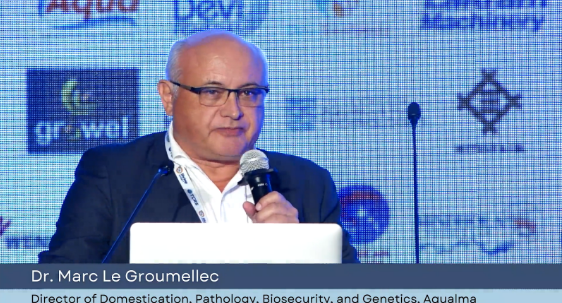
Dr. Marc Le Groumellec | Aqualma
With P. monodon being only 2% of wild catch in Madagascar, a breeding program was started in 1999 to produce them year-round through healthy broodstock, eliminating the need to re-introduce wild animals frequently. The status of Specific Pathogen Free (SPF) was achieved in 2003.
The broodstock domestication center is part of the Unima group’s vertical integration, including nauplii production, larval rearing, shrimp grow-out farms, processing plants, and exports mainly to Europe. Unima’s domesticated SPF broodstock and postlarvae have been marketed in India since 2021, with smaller scale trials done in Vietnam and Malaysia previously.
Penaeus Monodon Breeding: An Approach for a Sustainable Model
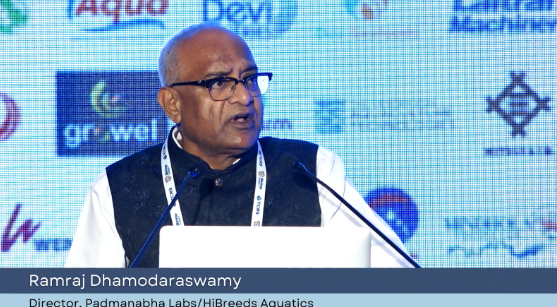
Dr. Marc Le Groumellec - Aqualma
Until 2012, the design of Unima’s P. monodon farms was like Latin American farms – low biosecurity with a huge water supply canal. Since then, the SPF strain has been adapted progressively to smaller ponds, higher densities, greater control. New selection programs have been initiated to improve performance and to continually adapt the stocks to specific countries/regions, densities, temperatures, and other conditions. Newly selected stocks are showing strong improvement in growth rate.
Unima is committed to reducing its carbon footprint through planting cashew trees, investing in solar panels, and using more sustainable feed ingredients. It is also improving animal welfare practices by inducing natural mating and spawning without eyestalk ablation.
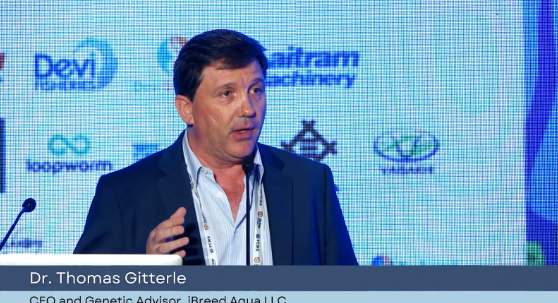
Dr. Thomas Gitterle | iBreed Aqua
In Ecuador, it is apparent that the growth and prosperity of the shrimp industry can be attributed, in part, to their strategy of selecting animals under local environmental conditions. L. vannamei has enormous adaptability to different environmental and farming conditions, which makes it well-suited for selective breeding. Selecting disease resistance based only on family information may not bring sufficient response due to low accuracies and low selection intensities.
Unleashing the Power of Shrimp Genetics for Sustainable Production

Dr. Thomas Gitterle - iBreed Aqua
A new approach to commercial breeding involves testing breeding candidates under many different environmental conditions and with pathogen pressure. This is a high biosecurity threat, but it is working in Ecuador. Other potential strategies include inducing favorable epigenetic effects (also poses a high biosecurity threat), selecting for less environmental sensitivity, genomic selection, and gene editing. New technologies like genomic selection can help select individuals with better pond performance and better resistance to disease.
At the conclusion of the 2024 Shrimp Industry Summit, experts and businesses reached several important conclusions, paving the way for new directions in global shrimp farming. Discussions on genetic technology, disease management, and process improvements not only optimized productivity but also aimed at sustainable development. The summit was not only a platform for knowledge exchange but also a bridge for international collaboration, helping the shrimp industry to continue growing robustly and overcoming current and future challenges.
For more detailed information on the presentations through images and videos, please visit the following link:
Ngày đăng : 14/09/2024
1943 View
Other Articles
Vietnamese shrimp and catfish choose a sustainable path in global competition
End-of-Season Shrimp Prices Reach Record Highs
Norway – Russia Reach Barents Sea Fisheries Agreement for 2026
Cà Mau strengthens traceability to enhance the competitiveness of the shrimp industry.
Cold stress: Effects on the plasma characteristics of whiteleg shrimp.
A new breakthrough in the prevention of diseases caused by the microsporidian parasite EHP in shrimp farming
Vietnam’s shrimp export outlook in the first quarter of 2026 continues to face heavy pressure from tariffs.
New England’s shrimp fishery to shut down for the long haul after years of decline
Crab exports to the United States account for more than 80%.
Thailand sets a target to increase shrimp production to 400,000 tons by 2026.
CTU-RAS: Recirculating Shrimp Farming for Sustainable Development
Vietnamese aquatic products reach new markets








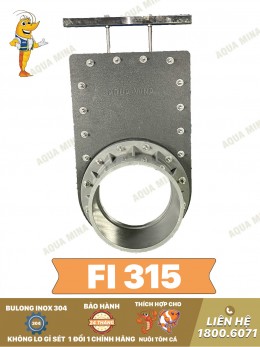
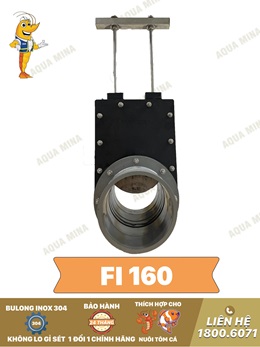

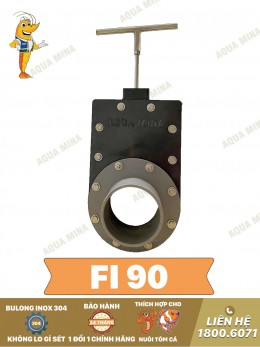
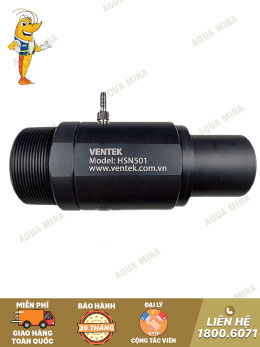
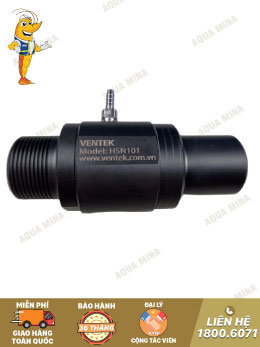
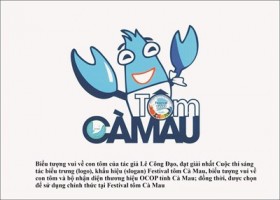
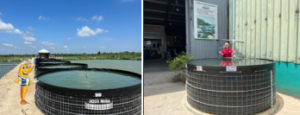
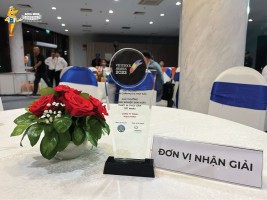
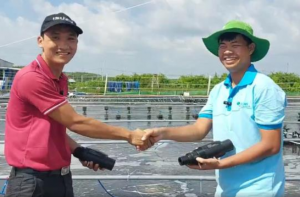
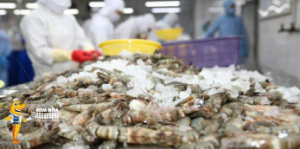
.jpg)